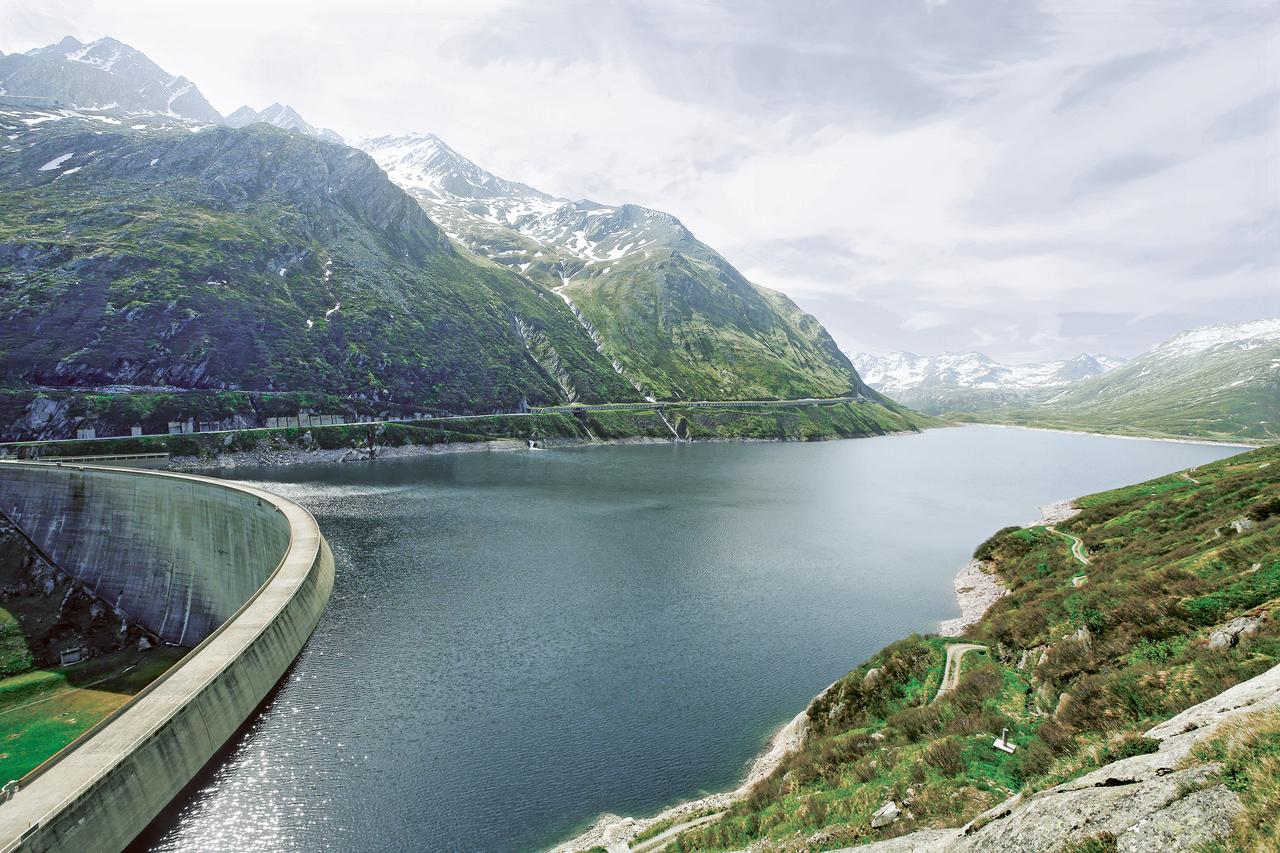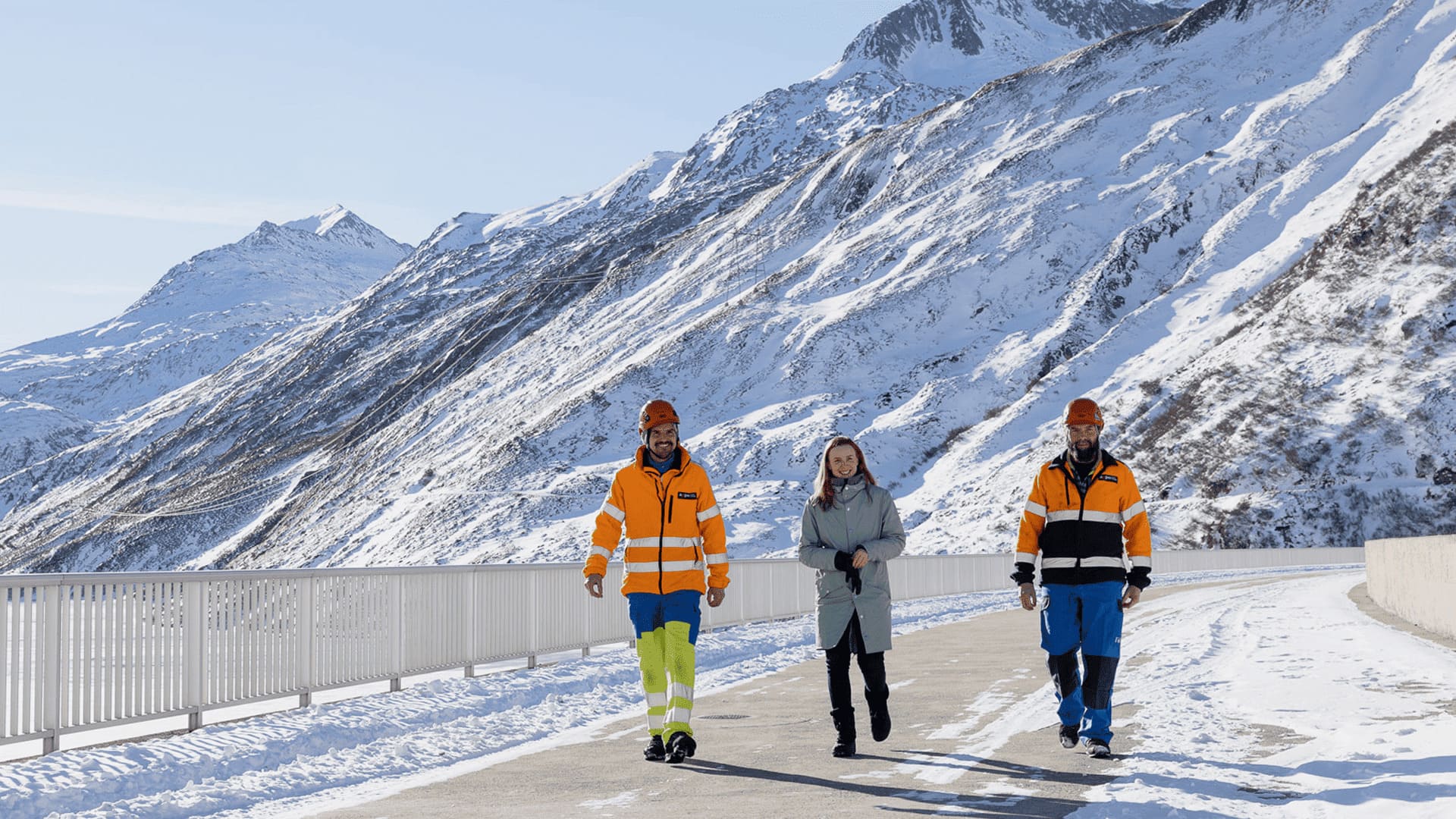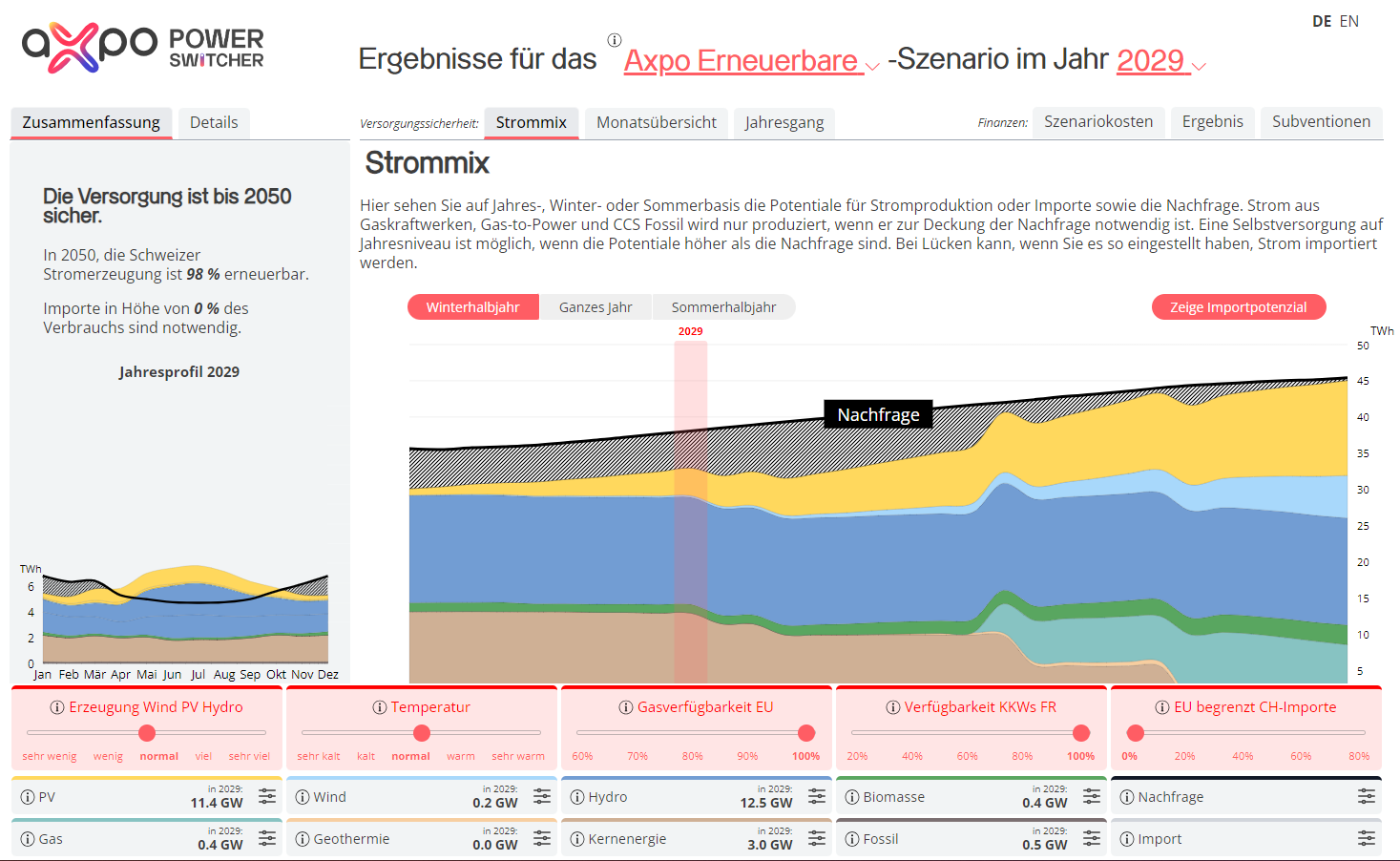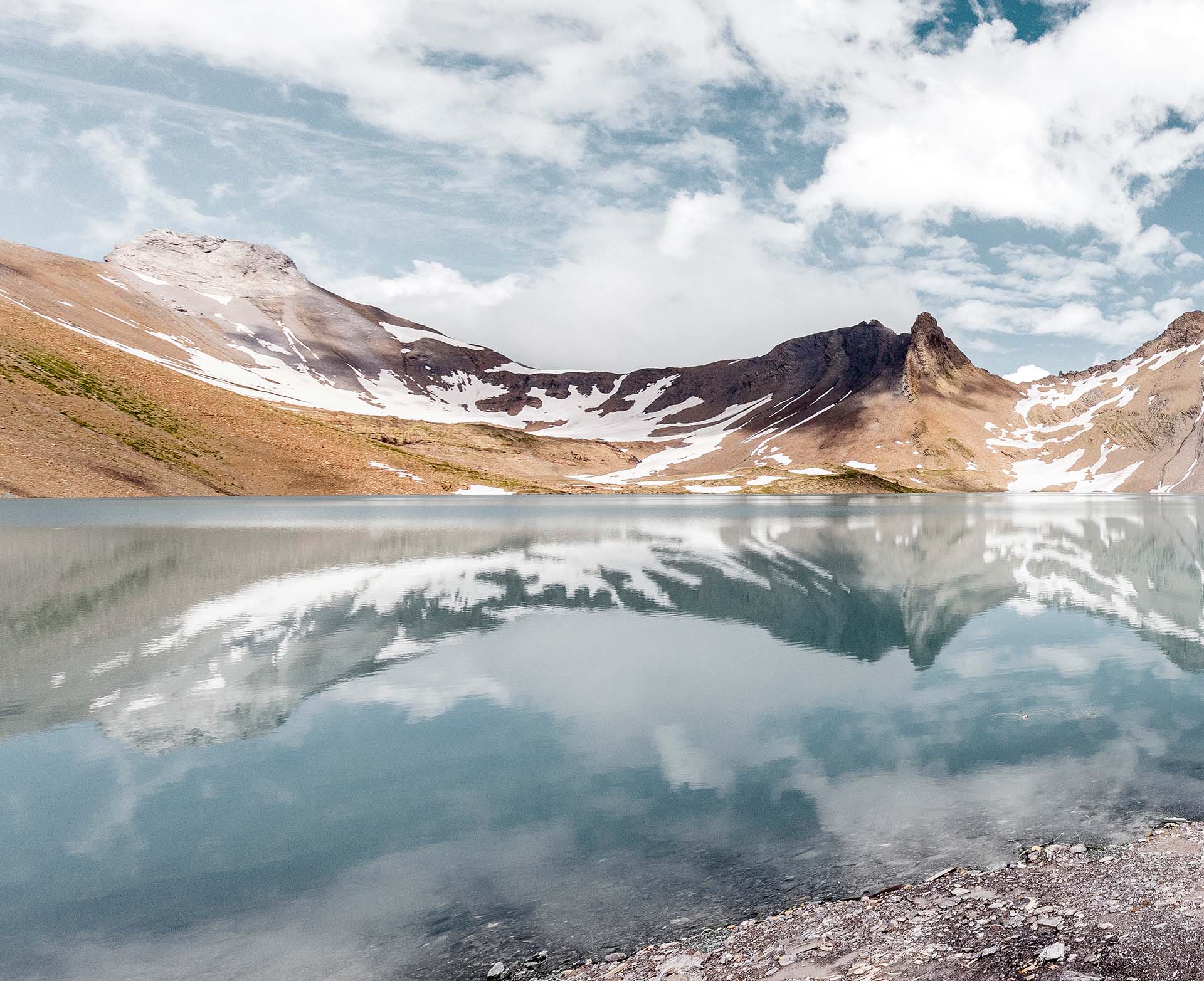26.10.2023 | Modern Axpo power plant produces energy for 14,000 households
Rüchlig power plant – a modern understatement in the centre of Aarau
Put into operation in 2015, the Rüchlig power plant is a completely new replacement and Axpo’s newest run-of-river power plant. In accordance with the highest environmental standards, what modern society expects is being provided in the smallest of spaces: constant availability with a minimal environmental footprint.
It gets hot in Aarau. Driven by the summer heat, people welcome the opportunity to cool off in and by the Aare. “Which I completely understand. But swimming near a power plant is dangerous, whether upstream or downstream.” Operations manager Manuel Häfeli is standing on the shimmering hot concrete surface of the weir looking downstream. Just 200 metres away, a mother is playing with her two children in the Aare.
“If one or more of the four machine groups here at the Rüchlig power plant were to suddenly fail, the water would be temporarily channelled via the spillway instead of through the turbines,” Manuel explains. What would the result of this be? An unexpectedly high wave – one that could put the mother and her children in danger. That’s why you always see signs near hydroelectric power plants warning of the dangers of an unexpected rise in water levels. Severe local thunderstorms, such as in the Emme Valley, should not be underestimated either. The Emme flows into the Aare. This means that floods and driftwood from the Bernese canton suddenly become a danger in Aarau, too.
Discrete energy production 24/7
The four machine groups are invisible. They are located directly under the hot concrete surface. “In the past, river power plants had tall machine halls,” Manuel explains. “But we – quite literally – built the new Rüchlig hydroelectric power plant into the ground.” The aim was for the power plant to inconspicuously blend into the neighbourhood. Modern, high-end apartment buildings are located just a few metres away from the weir. Because the energy production is so quiet and unobtrusive, the public is often unaware of the work that goes in behind the scenes.
Manuel Häfeli is the Operations Manager of the Rüchlig, Rupperswil, Villnachern, Windisch and Augst run-of-river power plants. He and his 32 employees produce renewable and carbon-free electricity around the clock. Run-of-river power plants are responsible for what is known as the base load. In other words, the electricity that is needed on a constant basis in Switzerland over a 24-hour period, such as for computer servers, television standby mode, street lighting, traffic signals and, last but not least, the refrigeration units of major retailers. During peak consumption times – such as in the morning when using the coffee machine, cooker or hairdryer – the electricity producers fire up their storage and pumped storage plants in the Alps.
Hand-in-hand – electricity production and nature conservation
The water surface below the weir reveals remnants of modern society – not a dead fish, but rather a single trainer floating sole up next to a plastic bottle. A little further away, two orange frisbees and a baseball bat float in the water. “We regularly remove large pieces of driftwood. Everything you can imagine gets washed up – we’ve even seen a dead body before,” Manuel says.
Operators of hydroelectric power plants are also responsible for maintaining riverside paths and hiking trails. Axpo therefore has good reason to be proud of the attractive hiking trails around its power plants throughout Switzerland. At the Rüchlig power plant, the concession area runs from above the Aarau Chain Bridge to the junction of the old Aare with the underwater canal. The Aargau floodplains are of national importance and a popular destination for nature lovers, but they also attract revellers and people using disposable barbecues. “Littering is an increasing problem for society,” Manuel admits frankly. The mountains of litter along the Aare are at their highest after a sunny weekend. Again, 6 to12 kilometres of riverside paths have to be managed at each of the four other run-of-river power plants under Manuel’s direction. “There are two specially trained employees in the team for this who spend the majority of their time working outdoors.”
Alongside tiresome waste disposal, they also carry out tasks that are closer to nature. Beavers, for example, are a frequent source of work because they can destabilise riverbanks with their dwelling and dam-building. They don’t hibernate, they are herbivorous omnivores and they fell trees year in, year out. They store their food supply of branches and twigs directly in front of the entrance to their burrow. “I sometimes come across beavers on my morning jog before work. They are shy and surprisingly big, measuring around a metre in length,” says Manuel.
In charge of the Aarau floodplains until 2074
Axpo will be looking after the flora and fauna near the banks of the Rüchlig power plant until at least 2074. This is how long the concession for energy production will last (2014-2074). During the concession discussions, it quickly became clear that a new replacement plant would be a win-win situation for everyone: for the canton of Aargau as the concession awarder, for Axpo as the concession holder, and for the environment as well. Various compensatory measures for the environment were defined.
The original Rüchlig power plant dated back to 1883 and was owned by the Jura cement factories for over a century before being acquired by Axpo. “The new construction project allowed an increase in output of around 25 percent on the same production area.” This was an important argument when the decision to invest was made. Today, the power plant produces an average of 64 million kilowatt hours of energy per year and feeds the electricity directly into the local 16 kV grid. This means that the power plant is able to supply energy to around 14,000 households.
Free movement for fish
Along with the important increase in production, the new building also enabled various nature-oriented measures to be implemented. These include two modern fish ladders and a fish bypass, which was implemented at the reserved-flow power plant. Together with the horizontal-axis and fish-friendly Kaplan turbines at the main power plant, all currently feasible measures to protect the fish have been implemented.
As a further compensatory measure, the recreational area around the power plant was upgraded. Axpo reactivated the floodplain landscape, linked various waterways and created shore bays with shallow water zones. New, separate habitats for different animal species were created. The reserved-flow power plant in the old course of the Aare, which was also newly constructed, ensures the prescribed residual water quantity of 30-40m3/s.
Flood protection for Aarau
A further argument in favour of the new replacement plant was that the town of Aarau and Axpo were able to plan for improved flood protection for the neighbouring districts of Scheibenschachen and Telli. The modern plant is designed in such a way that it can discharge water safely at all times, even in the event of a once-in-a-century flood. In Manuel’s view, this completes the cycle: “Whether in the summer heat or in a flood situation, Aarau’s residents barely notice the Rüchlig power plant. They benefit from a modern facility that produces energy from Aare water all year round.”
Facts & Figures:
Facts & Figures
Energy production: 64 million kWh / year (average)
Installed capacity: 11 MW
Installed generator capacity: 4 x 2.3 / 1 x 1.26 MW
4 + 1 (reserved-flow power plant) Kaplan bulb turbines
Weir: 5 weir openings each with a 13.8 m clear width / 2 weir openings each with a 14 m clear width (= spillway)
Gross fall height: 3.3–3.5 m
More on the topic of hydropower?
Axpo's hydro power plant division (ownership and participations) comprises around 60 plants. In a "Tour de Suisse of hydropower" we show what makes these plants so special and how important they are for a secure and sustainable electricity supply in Switzerland. More articles from this series:
Switzerland's first partner plant
And here you can find more information about Axpo hydropower.




.jpg)





